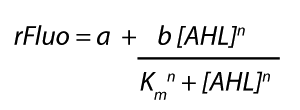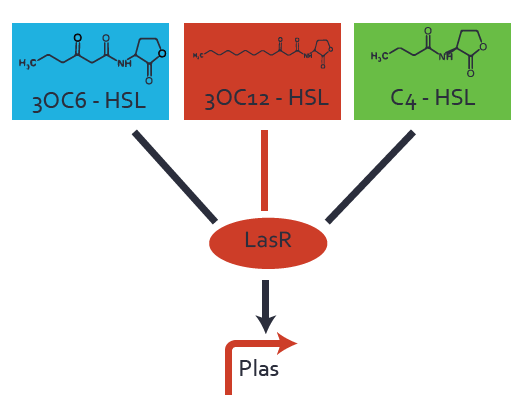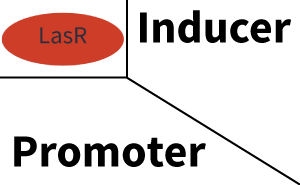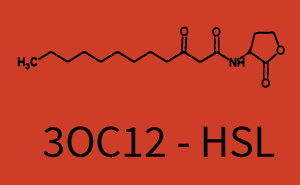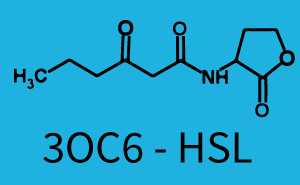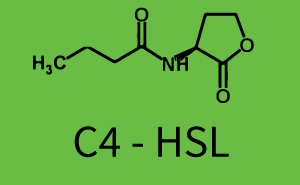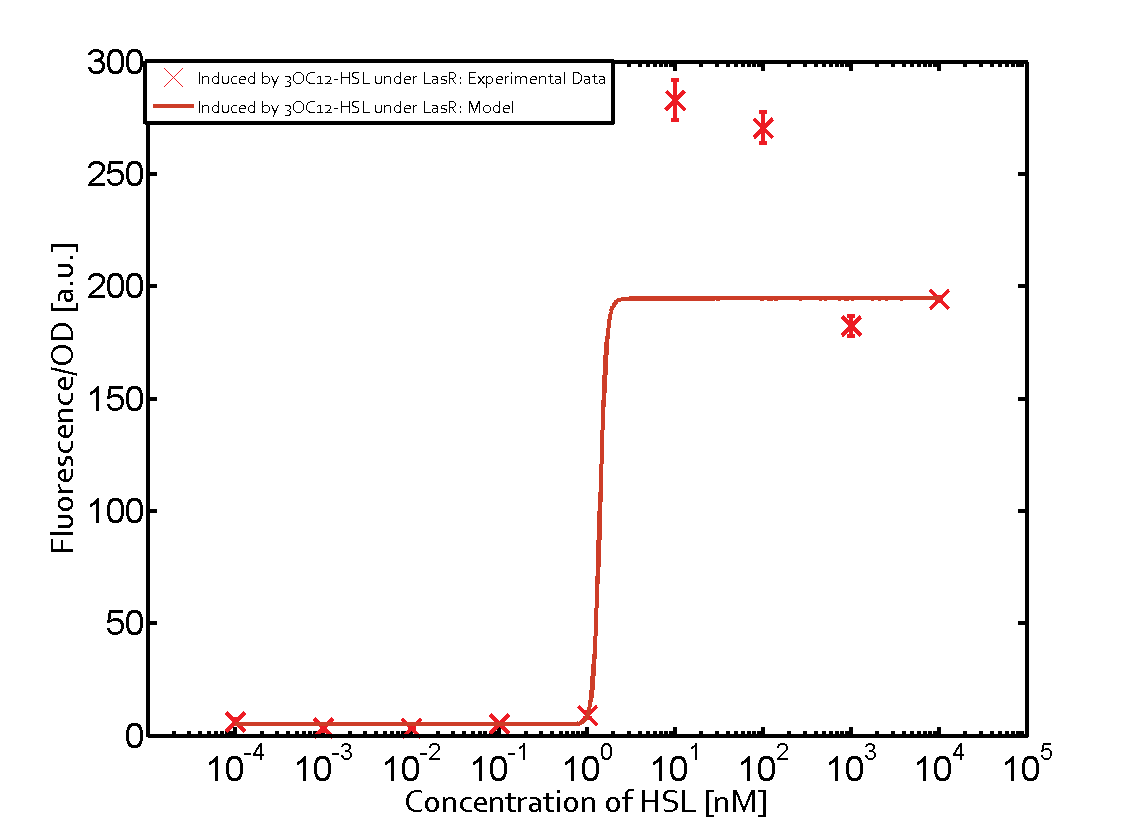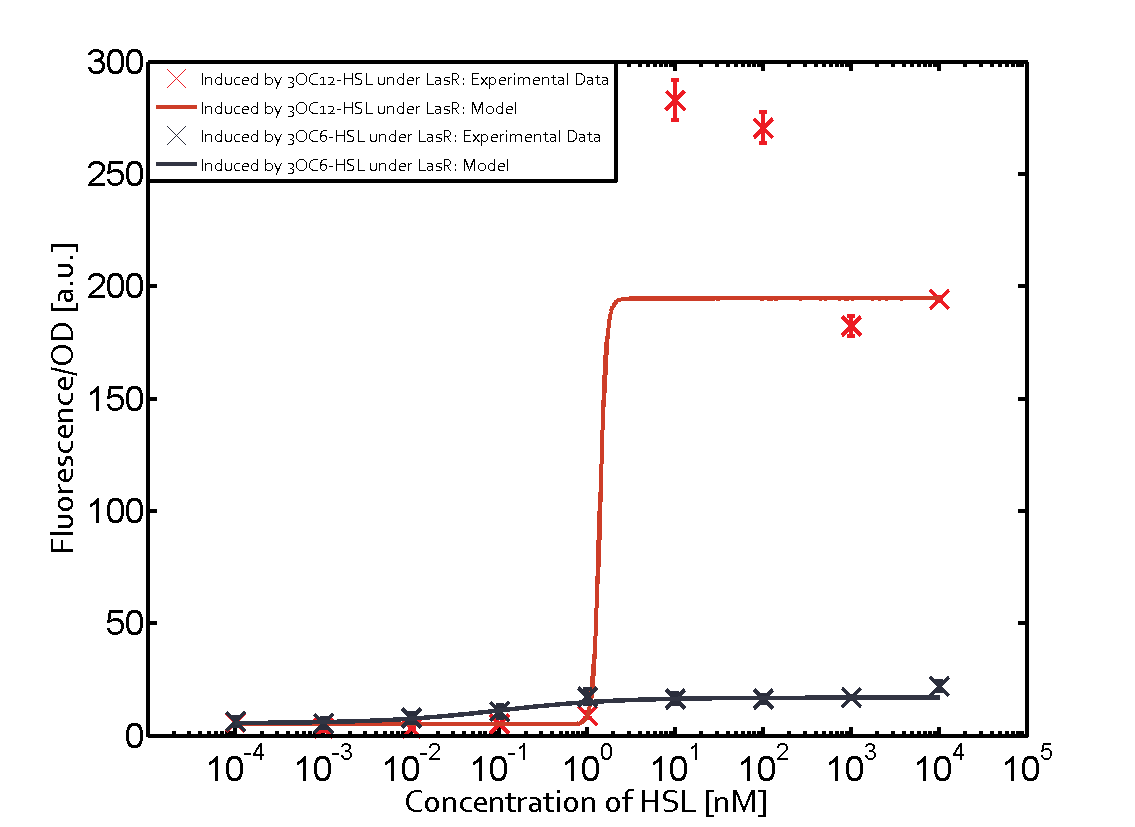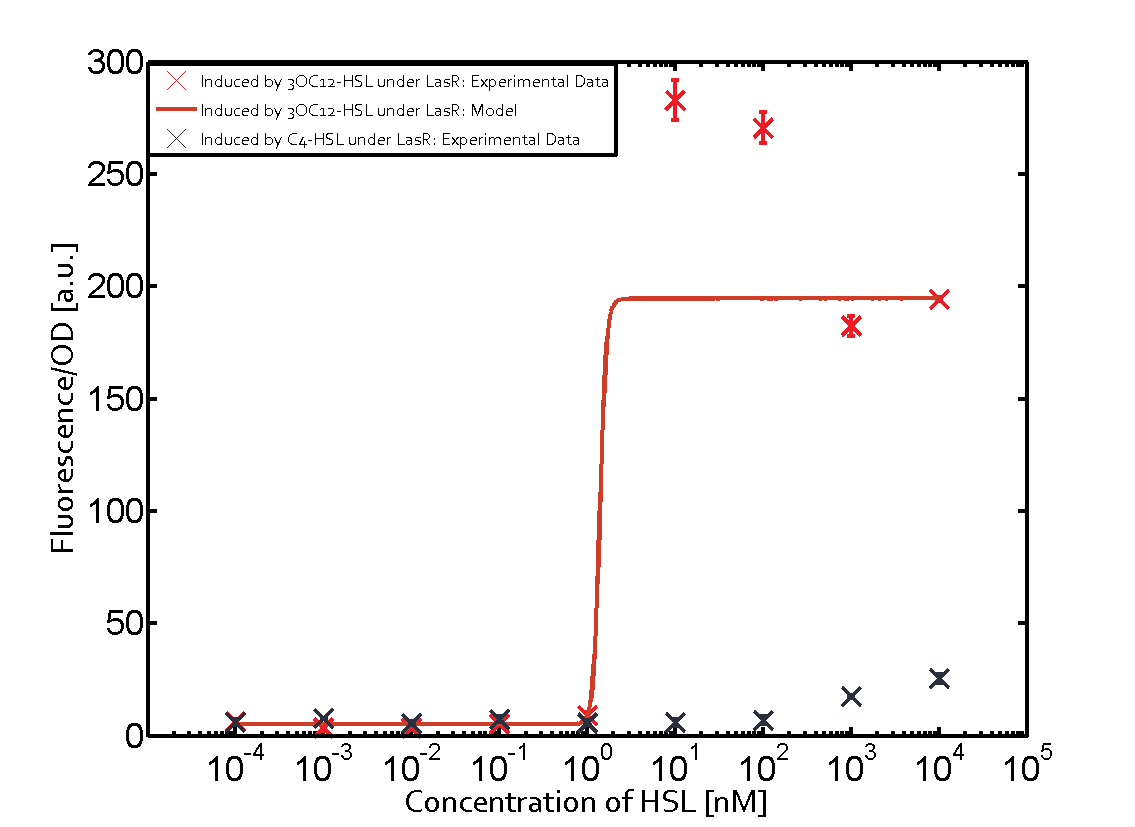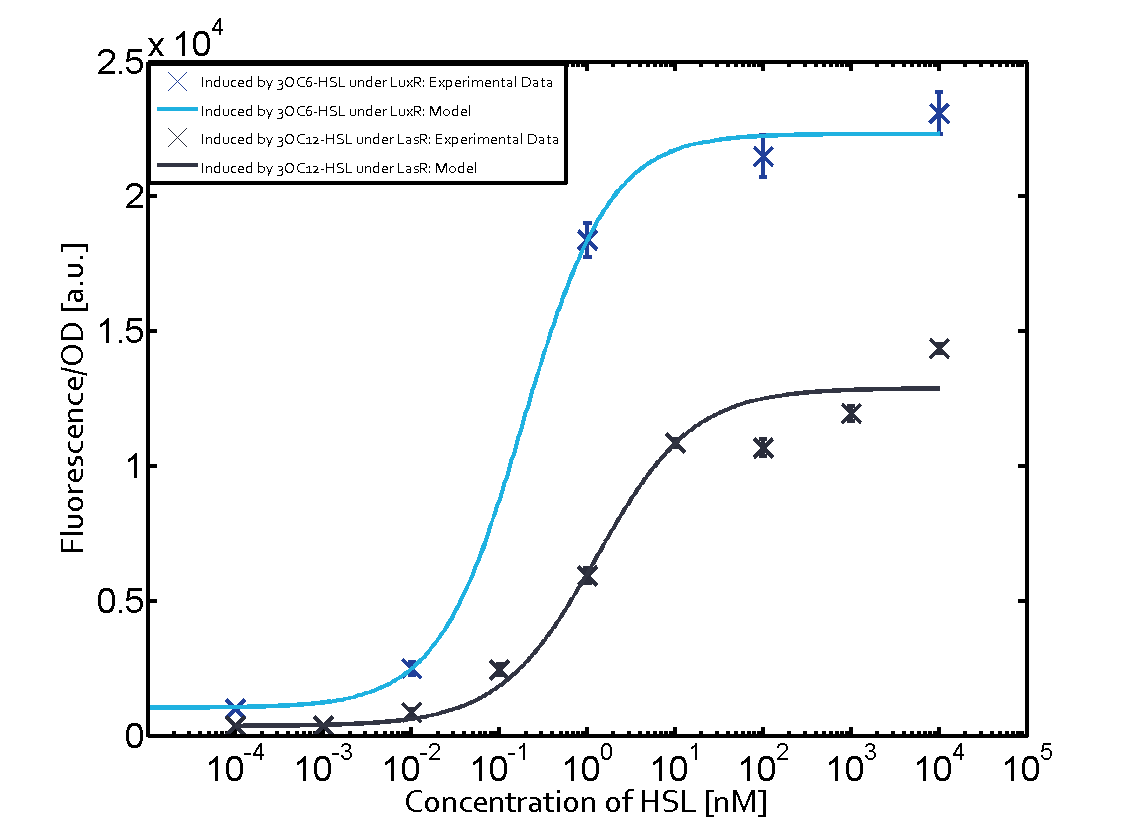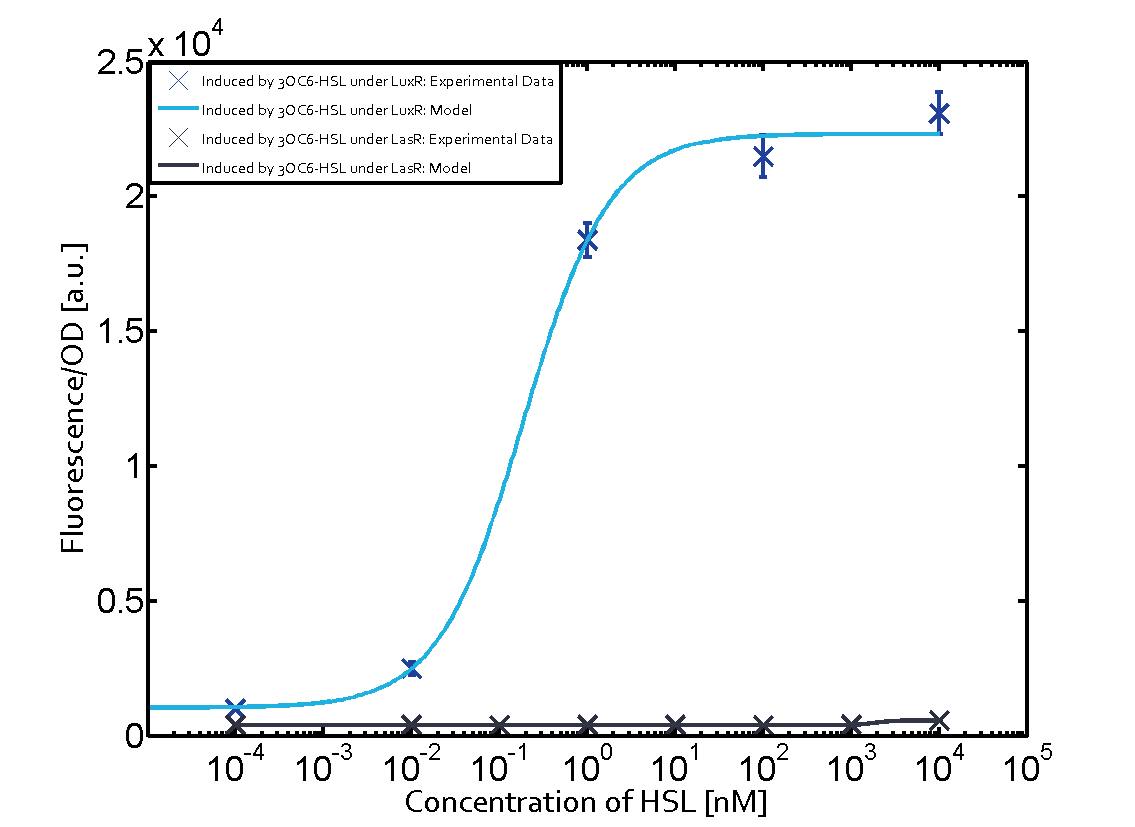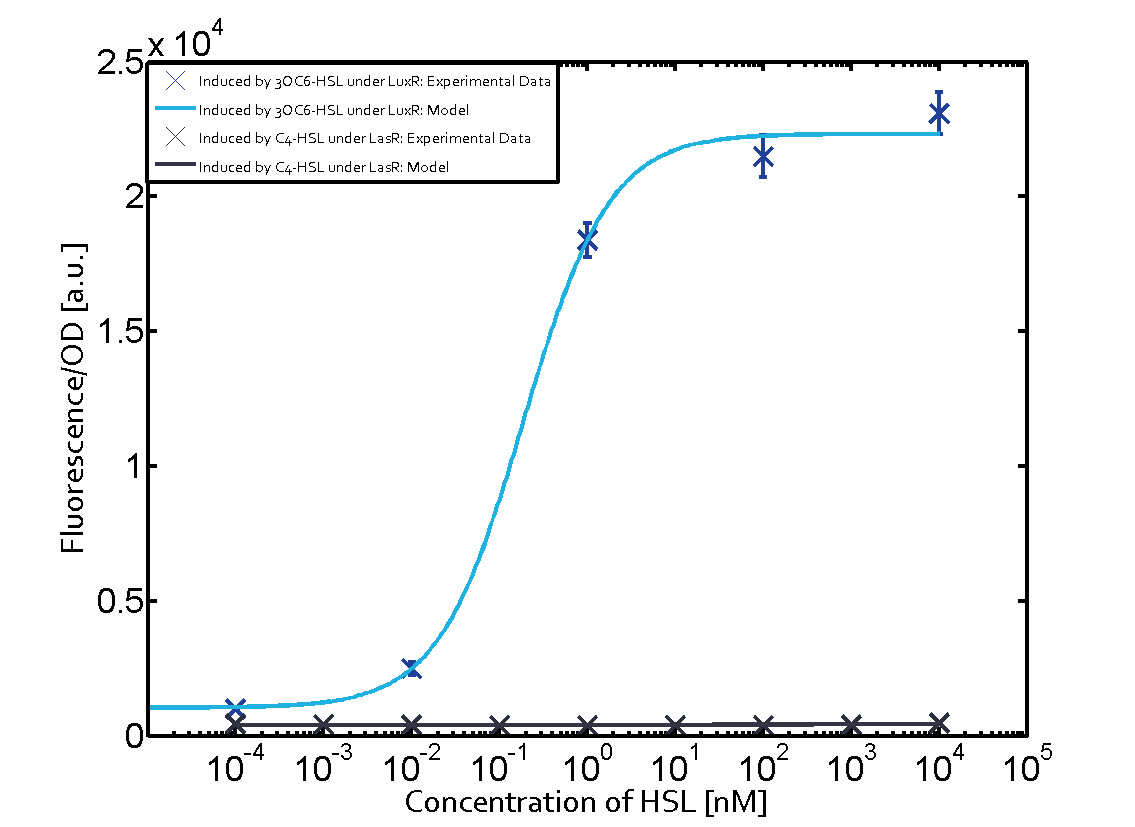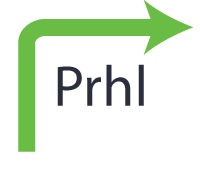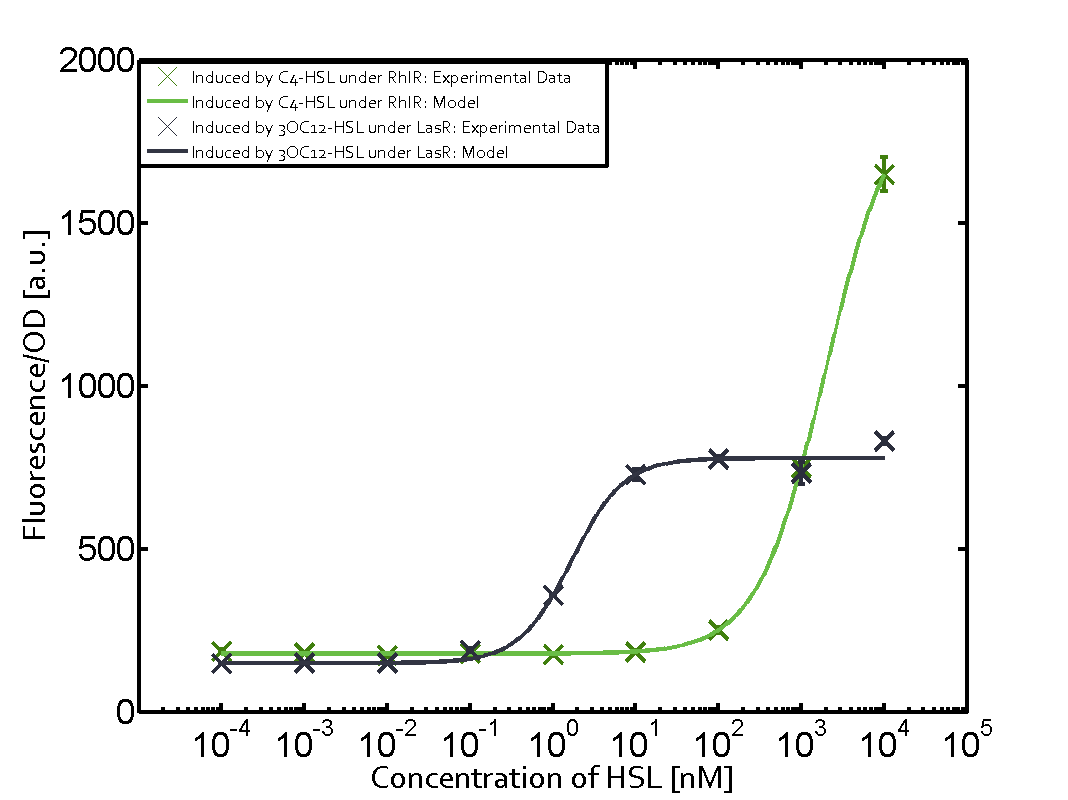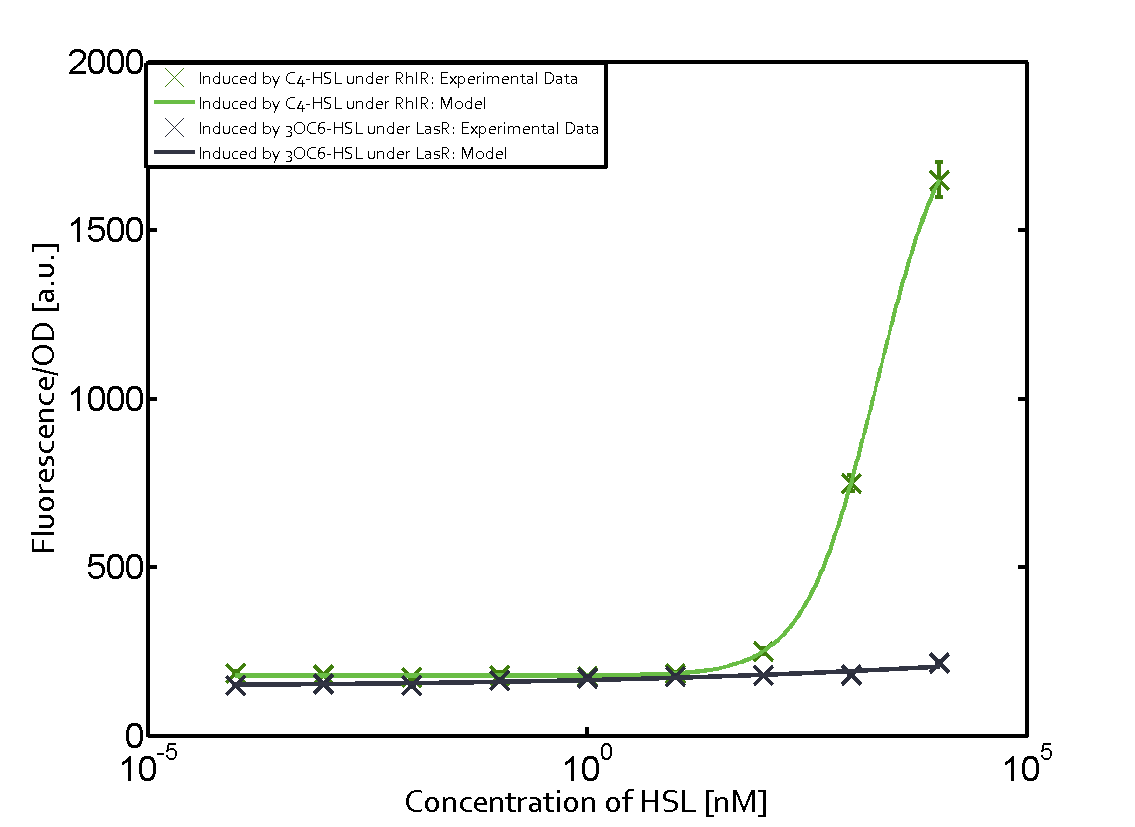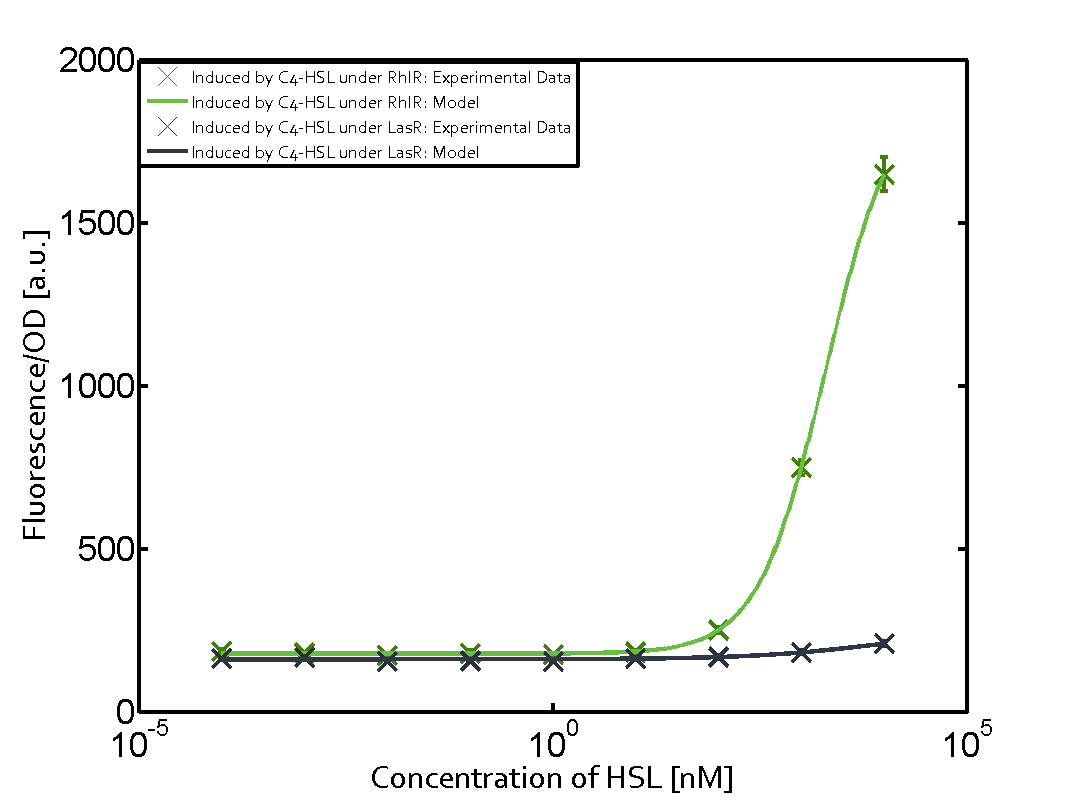Difference between revisions of "Part:BBa C0179:Experience"
(→Modeling crosstalk) |
(→Modeling crosstalk) |
||
| Line 38: | Line 38: | ||
[[File:ETHZ_HillEq.png|center|200px]] | [[File:ETHZ_HillEq.png|center|200px]] | ||
<p>The fitting of the graphs was performed using the following equation :<br><br> | <p>The fitting of the graphs was performed using the following equation :<br><br> | ||
| − | rFluo = the relative fluorescence (absolute measured fluorescence value over OD)[ | + | rFluo = the relative fluorescence (absolute measured fluorescence value over OD)[a.u.]<br> |
| − | a = basal expression rate [ | + | a = basal expression rate [a.u.](“leakiness”)<br> |
| − | b = maximum expression rate [ | + | b = maximum expression rate [a.u.]("full induction")<br> |
n = Hill coefficient (“cooperativity”)<br> | n = Hill coefficient (“cooperativity”)<br> | ||
K<sub>m</sub> = Half-maximal effective concentration (“sensitivity”)<br> | K<sub>m</sub> = Half-maximal effective concentration (“sensitivity”)<br> | ||
| Line 54: | Line 54: | ||
|- | |- | ||
! [https://parts.igem.org/Part:BBa_R0079 Plas] | ! [https://parts.igem.org/Part:BBa_R0079 Plas] | ||
| − | |a = 5.274 (0, 15.51) [ | + | |a = 5.274 (0, 15.51) [a.u.]<br> n = 11.67 (0, 3.763e8)<br> Km = 1.396 (0, 1.504e7) [nM]<br>b = 189 (162.5, 215.6) [a.u.]<br> |
| No crosstalk | | No crosstalk | ||
| No crosstalk | | No crosstalk | ||
|- | |- | ||
! [https://parts.igem.org/Part:BBa_R0062 Plux] | ! [https://parts.igem.org/Part:BBa_R0062 Plux] | ||
| − | | a = 362.4 (158.2,566.6) [ | + | | a = 362.4 (158.2,566.6) [a.u.]<br> n = 0.7898 (0.3241,1.256)<br>Km = 1.269 (0, 2.548) [nM]<br> b = 1.253e4 (1.085e4, 1.422e4) [a.u.]<br> |
| No crosstalk | | No crosstalk | ||
| No crosstalk | | No crosstalk | ||
|- | |- | ||
! [https://parts.igem.org/Part:BBa_I14017 Prhl] | ! [https://parts.igem.org/Part:BBa_I14017 Prhl] | ||
| − | | a = 149.3 (140.6, 158.1) [ | + | | a = 149.3 (140.6, 158.1) [a.u.]<br>n = 1.366 (0.808, 1.923) <br> Km = 1.674 (1.259, 2.09) [nM]<br> b = 628.9 (599, 658.7) [a.u.]<br> |
| No crosstalk | | No crosstalk | ||
| No crosstalk | | No crosstalk | ||
Revision as of 12:57, 24 October 2014
This experience page is provided so that any user may enter their experience using this part.
Please enter
how you used this part and how it worked out.
Applications of BBa_C0179
User Reviews
UNIQ3ea36cbaca39d9d7-partinfo-00000000-QINU
|
••••
ETH Zurich 2014 |
Characterization of two-order crosstalkBackground informationSystem consideredModeling crosstalkEach experimental data set was fitted to an Hill function using the Least Absolute Residual method. The fitting of the graphs was performed using the following equation :
First-order crosstalkFirst Level crosstalk: LasR binds to different HSL and activates the promoter PlasSecond Level crosstalk: LasR binds to 3OC12-HSL, its natural HSL, and activates different promoterSecond order crosstalk: Combination of both cross-talk levelsResults
| ||||||||||||||||||||||||||||||||||||
|
Antiquity |
This review comes from the old result system and indicates that this part did not work in some test. |
|
No review score entered. Northwestern 2011 |
The 2011 Northwestern iGEM team used this part as a part of our Pseudomonas Aeruginosa biosensor. We were able to successfully express RhlR (C0171) continuously in our system. BBa K575032 |
|
•••••
iGEM Dundee 2014 |
Dundee iGEM 2014 used this lasR coding sequence to build two composite parts termed BBa_K1315009 and BBa_K1315010. These were designed as biosensors for Pseudomonas aeruginosa AutoInducer-1 (PAI-1), and were to be used in a bio-electronic device to improve diagnostics for Cystic Fibrosis patients. Details of experimental work are logged on the experience pages of BBa_K1315009 and BBa_K1315010. |

